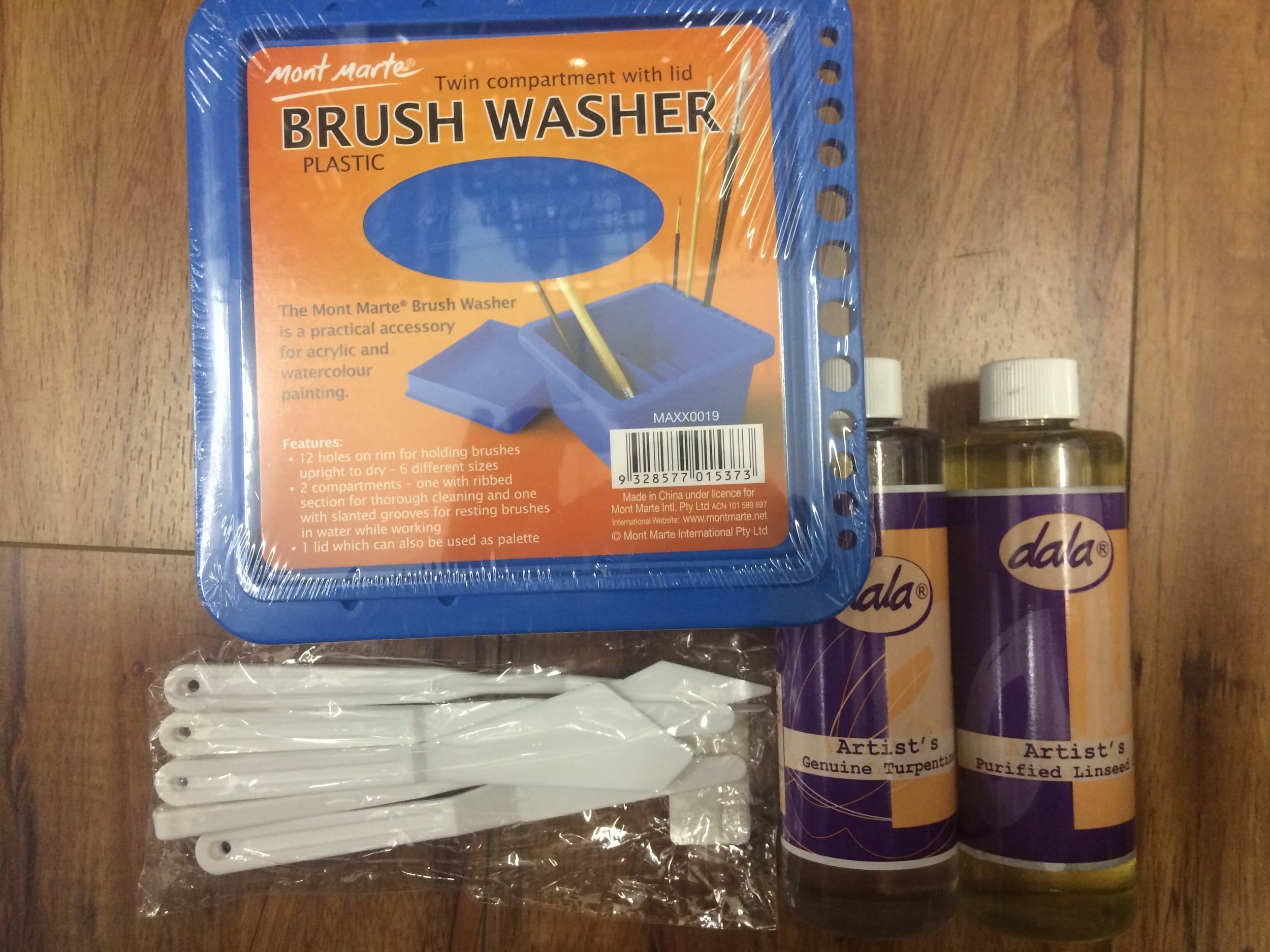“I love paint. I like watercolours. I like acrylic paint... a little bit. I like house paint. I like oil-based paint, and I love oil paint. I love the smell of turpentine and I like that world of oil paint very, very, very much.”
1. Gassed: Baby oil vs Turps
Romantic ideas of the depressed artist painting into the early hours of the morning are often accompanied by an overwhelming olfactory sensation, of turpentine. Fortunately, the wonders of linseed oil and baby oil have been discovered. This is what my basic set-up for oil painting looks like:
Linseed oil, Paper Towel Roll, Tear-Off Paper Palette, Jar with Goldilocks (Something to scrub your brush against), Baby Oil, Chroma Incredible Brush Cleaner
A very useful Brush Washer, Artist's Genuine Turpentine and Artist's Purified Linseed Oil. I also included some plastic palette knives - perfect for beginners. Once you've found one that you really like - you can go out and buy the real thing.
While painting, I use homemade Linseed Oil halved with Artists Turpentine to dilute and mix the oil paint. Brushes are then cleaned in Baby Oil. It helps to add Goldilocks to a small jar with the Baby Oil, to have some texture against which you can clean brushes. IMPORTANT NOTE: Do NOT paint with the Baby Oil, and when brushes are cleaned make sure to wipe them off on an old rag or piece of paper towel at least 5 times. The oil paint will not stick to any area of your canvas that has been exposed to baby oil and you will need to clean the infected area with turps and start over. Overall, I use the minimum amount of turpentine within the studio, which results in a much healthier work environment.
2. Brushed up
Here are a few brushes which are great to have in stock. Note that the brushes on the right hand side are my favourite, they are however rather pricey.
A few basic brushes to have: A small soft brush for details, 3 brushes in different sizes and soft and sharp pointed slanted brushes.
These might not appear as elegant, but they are an essential part of any painters brush collection. These are useful for painting in backgrounds.




